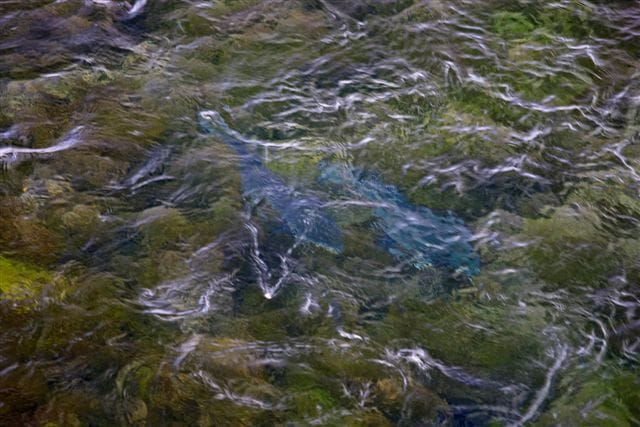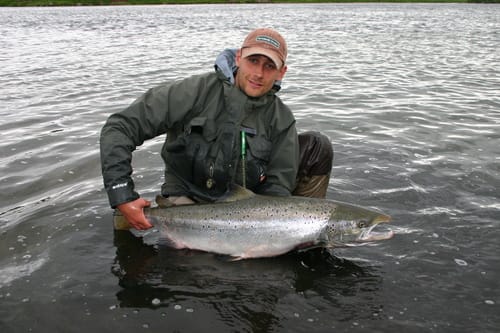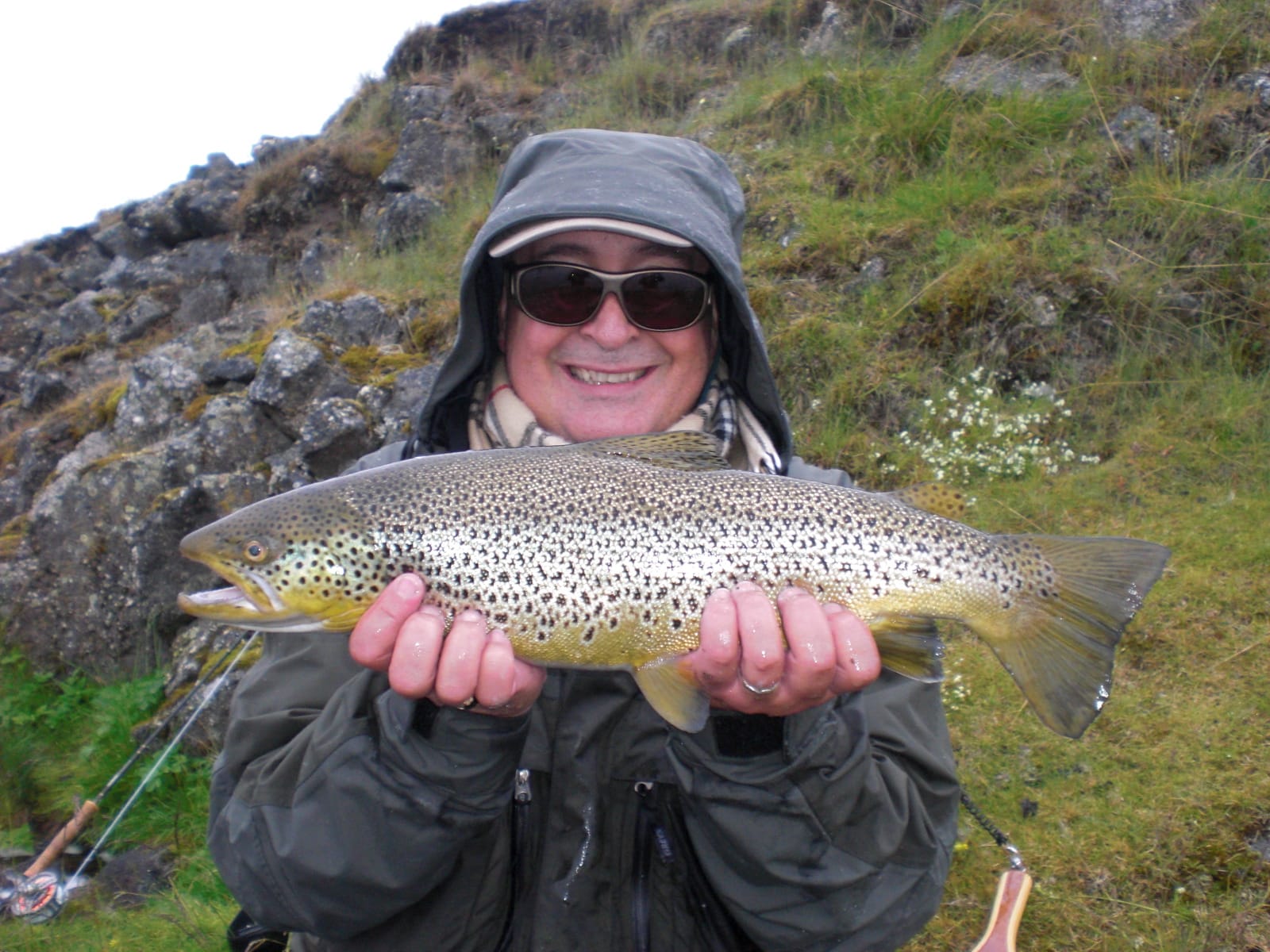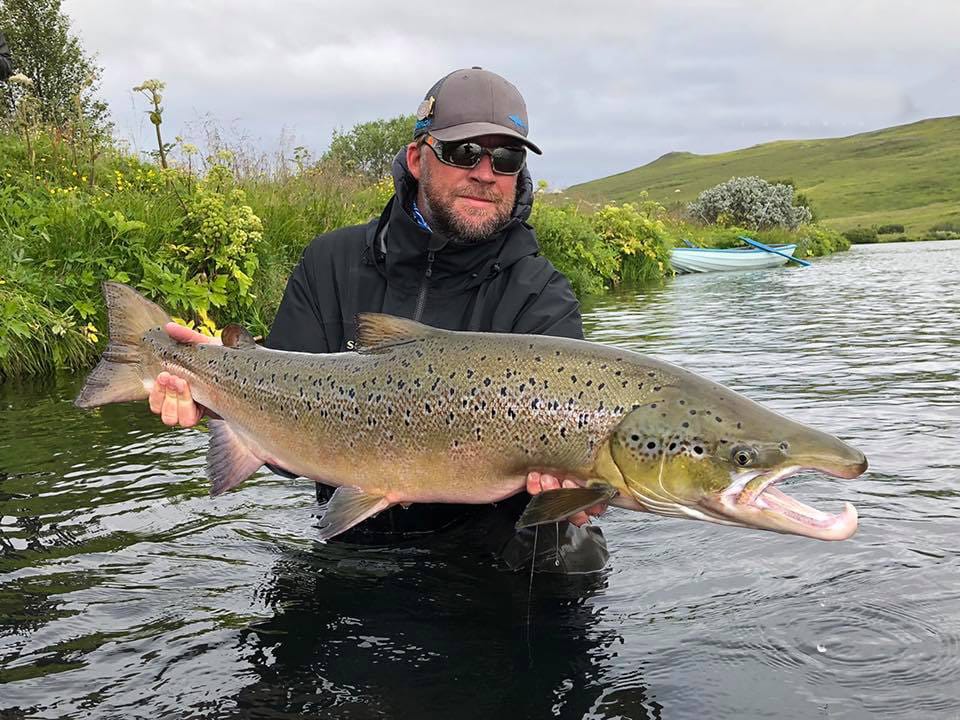Last weekend once again I found myself over the North Atlantic heading to the land of fire and Ice. Iceland has had a mixed season this year with some exceptional fishing at the start of the season tied in with some trying times through July an into early August. On the West Coast at that point it had not rained properly in five weeks and many rivers such as the Nordurá, Langá and Laxá I Kjos have had a tough time due to exceptionally low water conditions.
Amidst all this doom and gloom many fishermen have thrown the rule book out of the window, changed their fishing patterns and techniques to match having some great success. Peter Baxendale’s team chalked up 104 salmon on the Langá in a river two entire feet lower than last year. How? Single handed trout rods, 8 lbs leader and size 18 Red Francis flies. Dickie Nicholson’s team followed suit on the Laxá I Dolum with over 100 fish to the six rods for the week. All of this happened in blazing sunshine more akin to the south of France.
The North coast is having some of the best runs of fish since 2005, and Laxá I Adaldal has seen some monsters hooked, landed and lost. Neil Parkinson lost of fish of over 25 lbs, but landed one of 19 lbs, but by this time due to the hot conditions and the southerly wind the Laxá I Adaldal had been badly affected by blanket weed flowing from Lake Myvatn. In the first week of August Malcolm Scott and Lilla Rowcliffe, regulars of the Adaldal had persevered despite the weed, one to single hooks and landed fish of 19 lbs and 16 lbs respectively. Malcolm lost a monster that the guides estimate well over 25 lbs.
The ever increasingly popular trout fishing on the top of the Laxá I Adaldal at Myvatnssveit and Laxardal has been a huge success this season. Top rod so far has been Andreas “The Heron” Topintzis who is the secretary of the Salisbury and District Angling Club with 38 fish in 3 days up to 7 ½ lbs. The other high scorer was our very own Chris Yrazabel, owner of sight Cast in Los Roques who swapped his 8 weight for a 5 weight and had over 60 in 5 days. Chris always fishes for trout in his off season and normally fishes in Patagonia. He called me from Caracas on his return to say that it was better fishing than 8 Patagonian trout lodges he had visited in terms of size, numbers and aggression.
This is the time of year that I assess all the feedback received from our anglers and sit down with the directors of the Angling Club to discuss improvements that can be made for next year. It is a shame that the only place to find them at this time of the year is on a river, which makes a perfect board room! My first port of the call was Reykjavik for a quick chat with Pall, and then on to the domestic airport for a 45 minute flight to Akureyri, the main northern town. By 2130 I was safely in the Ness Lodge on the Laxá I Adaldal with Halli, the director of Angling at the Reykjavik Angling Club. It was lovely to see so many old friends.
The following couple of days reminded me of just why I love this river so much. The conditions were perfect, overcast and cooler than the previous few weeks. The weed from Lake Myvtn became minimal almost instantaneously, but there are a few ways to combat it. Using knotted tapered leaders is a good way as the blood knots on the cast catch any weed first and allow the fly to fish freely for longer, and the second is to use small single hooked flies. These are tied on Salar singles which are brutishly strong, and combined with 30 lbs leader fished on a loop allow the fly to swing freely.
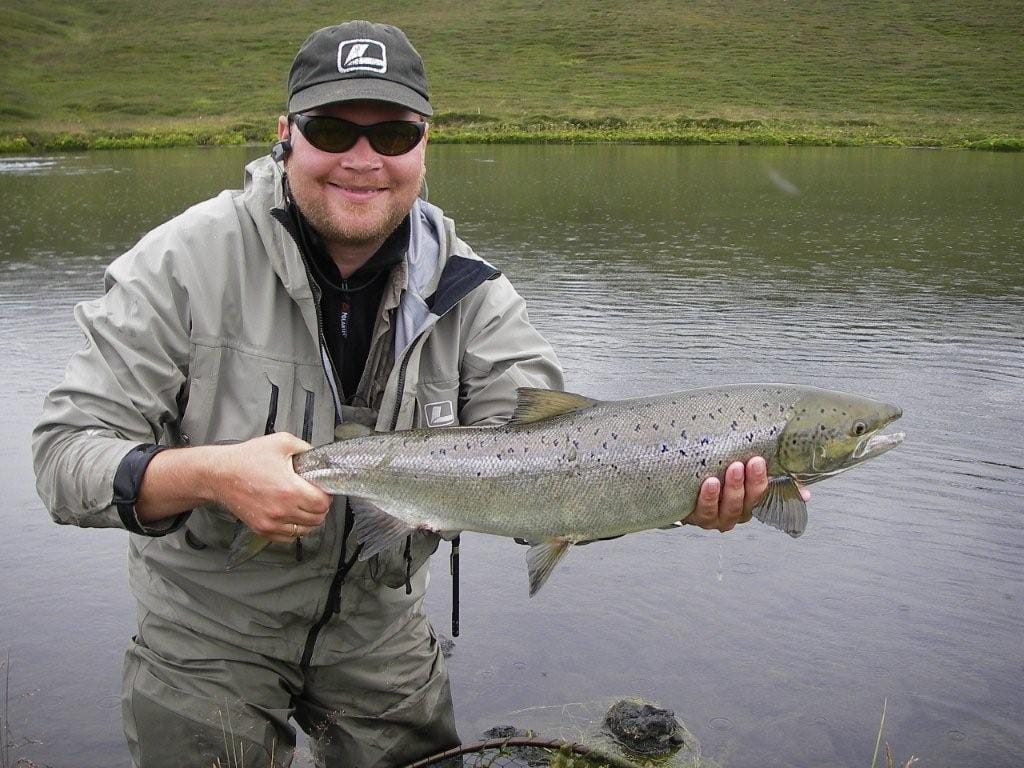
In summary my first fish was a cracking 16 lbs hen fish from the lowest pool Höfdahylur that came out of the water like a torpedo to hammer a stripped sunray shadow. I do love to fish this method as the takes are extremely exciting. The Adaldal is a wide and calm surfaced river, so follows are easily seen as large bow waves push across the river. A square cast followed by small strips seems to irritate them the most. I then took a 12 lber from Grunahyjir or “Pinnacle Pool”, a 10 lber from Birgisflud about four feet from the bank and lost another good fish just below it in the run. There was a large amount of activity on the river with almost constant action. I think with the slightly cooler conditions the fish were feeling less lethargic.
The following day Halli took me to top of a very wide stretch called Vitadsgafi. Here the river is wide and relatively slow moving with an island on the far bank. We saw a large fish move in the middle of the current a long way out. With the calm water I was concerned about spey casting and disturbing it so I stood on top of the bank, tucked my 14’ rod into my hip and double hauled the Rio Powerspey out into the middle of the river and began a small strip. After the second cast there was a huge bow wave that followed the small size 10 Nighthawk and then everything went tight. In my excitement I initiated a saltwater strip strike….. and pulled the fly clean out of the fish’s mouth……school boy error.. Halli, who had been lying on the bank next to me nonchalantly looked up and said,
“Don’t strike the salmon… that fish was over 20 lbs… idiot!” before returning his gaze to where the bow wave was disappearing across the pool. Knickers. I have never been very good at fishing for salmon in calm water and have always struggled with very gentle takes. Having done so much saltwater fishing I always get carried away. Ah well….
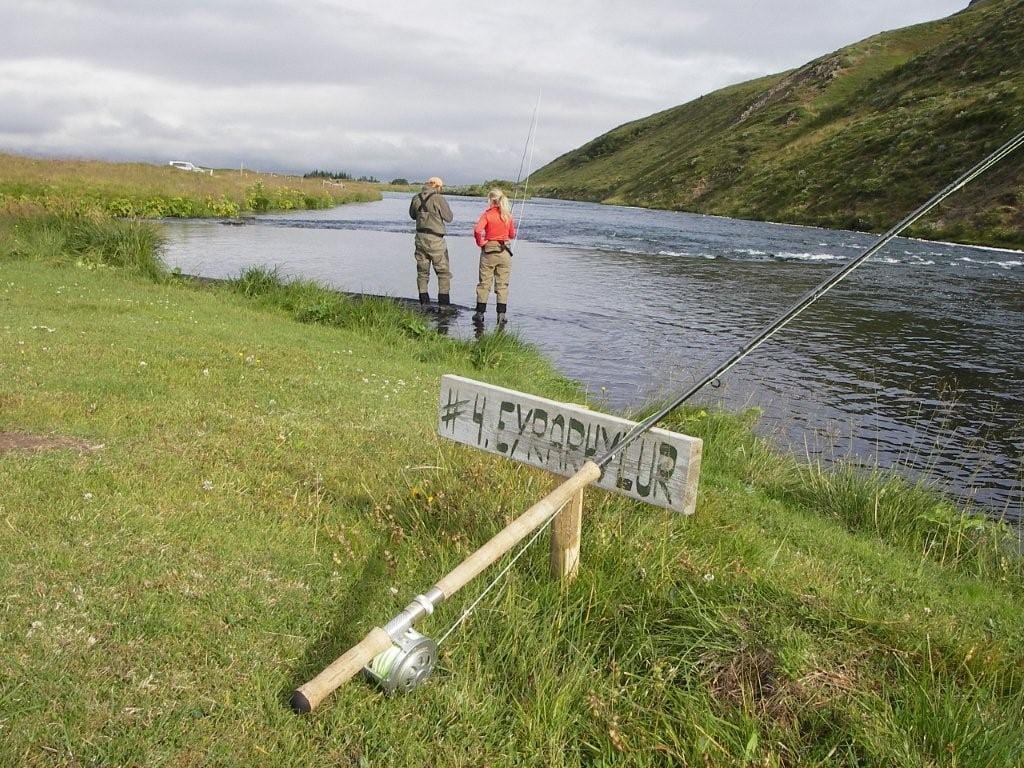
In the afternoon I pulled a nice grilse of 5lbs from the hole in front of Kirkjuhólmakvísl and another 12 lber from a large laval hole in the middle of Pressthylur. This again I attacked by standing on the bank and double hauling the fly out into the hole. I think the gentle presentation of the fly dropped on its nose worked well in the quiet water. You can wade out a way, but again entering the water creates disturbance which in the calm of an evening in my opinion has to disturb the fish.
My last morning I was left to my own devices on Höfdahylur again, and this time I started much higher up the pool in the widest section. I had seen a salmon head and tail there the first time I had fished it, and almost as soon as I arrived on the pool the fish showed again in greeting. The high bank provided an excellent vantage point and again I used the double haul to out the fly right out in the middle of the river where I had seen it “rise”. This time I was employing a black and blue cone head tube fly. I stripped it across its nose and was immediately welcomed by a colossal push of water and the fish hit the fly hard. I think I really upset it as it went charging down the pool putting me well into my backing. I was giggling as I followed it a little before applying some sideways strain and piling the pressure on. I have always had the attitude that if you are attached, play the fish as hard as you can. It is better for the fish, and if it falls off, it falls off. More often than not though the shorter the battle the more likely the hook will hold.
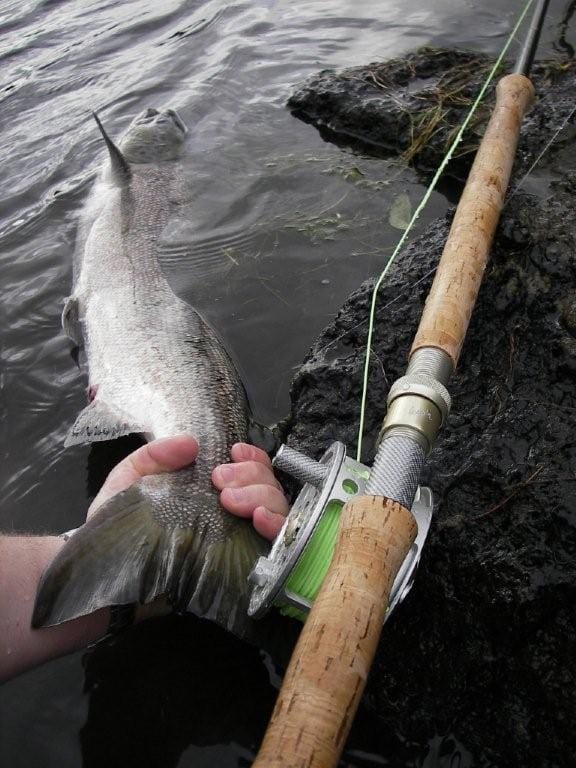
I scrambled down the bank into the water and managed with a little slack line to lift the hen fish’s head and hand tail her. After a few quick shots for Habeus Corpus (proof of body) I revived the fish that went back strong and sat giggling to myself until Halli arrived. After that experienced I put my rod down and did a little guiding for my fishing partner, Mjoll (pronounced Mjertle, the manageress of Nordurá, Langá, Hitará and Laxá I Dolum lodges on the west coast), and got her into a couple of smaller fish higher up. She fishes the Laxá I Adaldal every year, which considering she manages so many of the famous west coast rivers says a lot.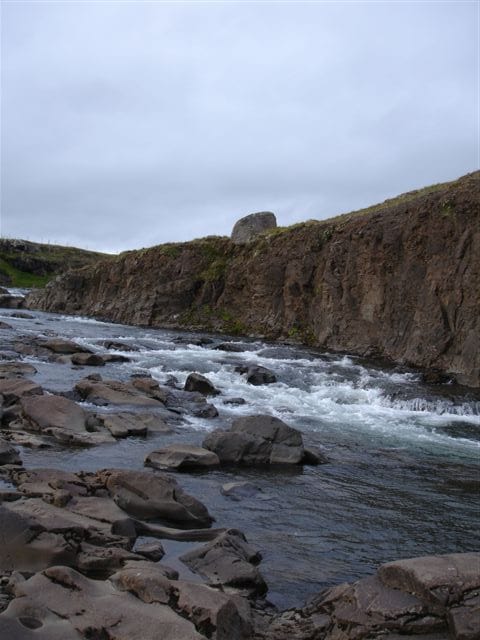
At lunch time Halli and I loaded up the car and drove across the North coast to the Western Rivers. I wanted to see the whole of Laxá I Dolum which was new this season. Rain had finally arrived on the West coast and Laxá I Dolum had had 27 fish in the evening session before we arrived. It was raining hard and already the feeder streams were swollen. The river was still low to where it should have been, but was already beginning to look healthier than previous weeks. Laxá I Dolum is a 26 km private river perfect for an intact party of 6 rods. It is one of the few rivers in Iceland that has such a small number of rods to fill it, and has a fascinating character. For more detail please see Charlotte’s report from earlier in the season.
We moved onto to Nordurá to meet the board members of the Reykjavik Angling Club and had a very enjoyable evening catching up and discussing this season and the laying the ground work for next season. There will be some exciting developments for next year. Iceland continues to enthral me, and every time I go I learn something new, discover and new place and learn more about this fascinating country. It really is the Atlantic Salmon capital of the world as no where will you find such a high concentration of top quality salmon rivers in such a small area. The fact it is only 3 ½ hours away from the UK just makes me want to go more.

